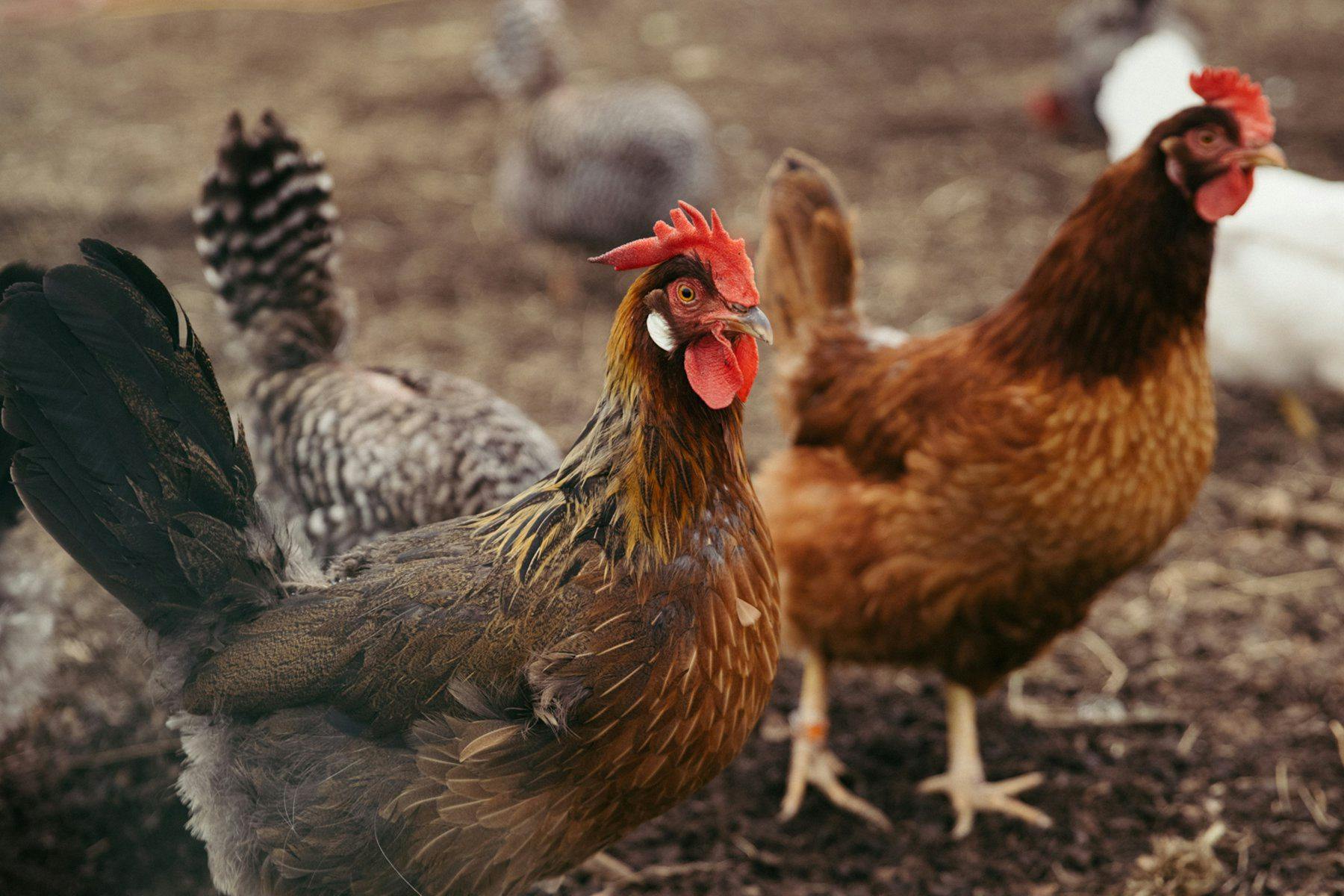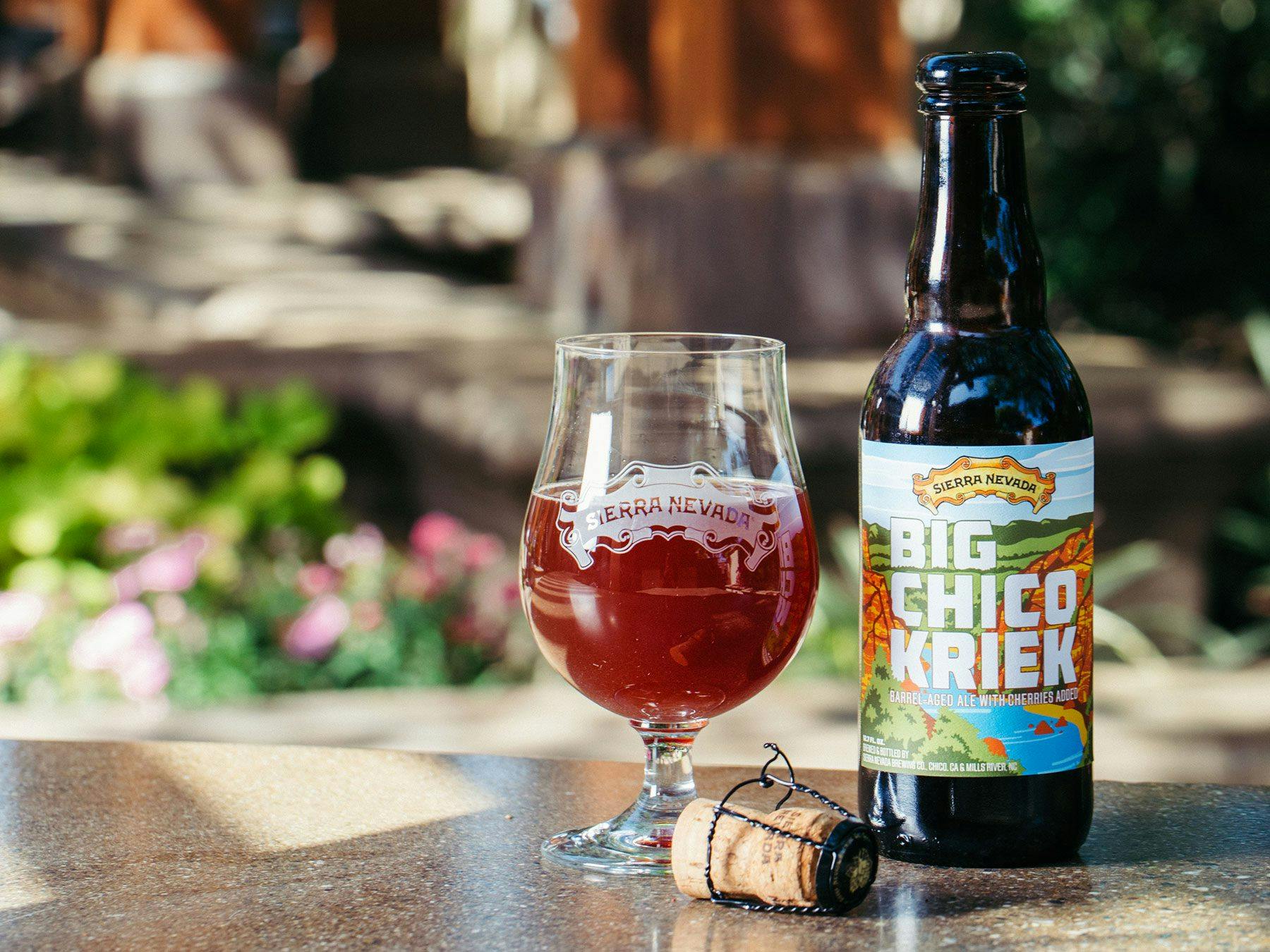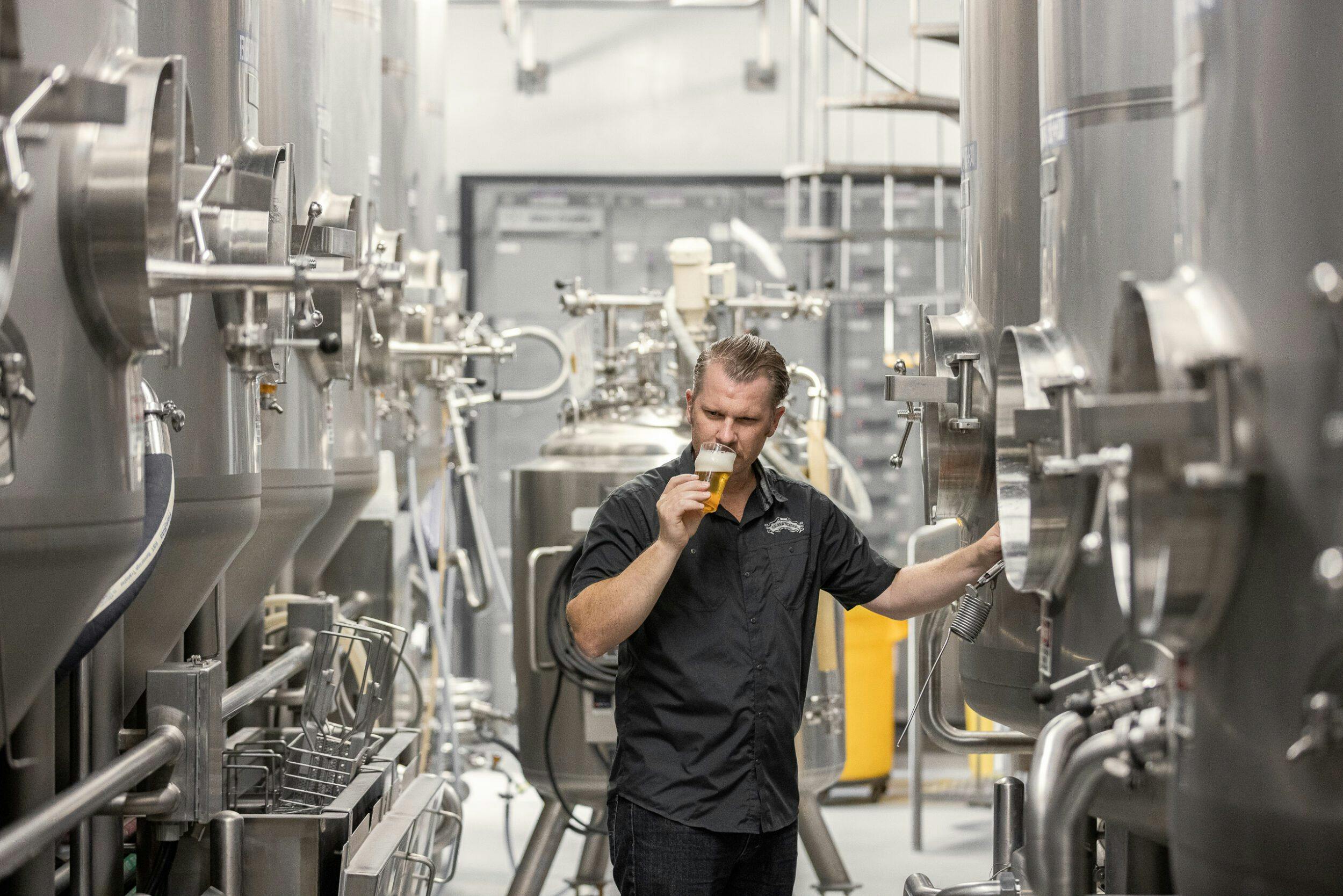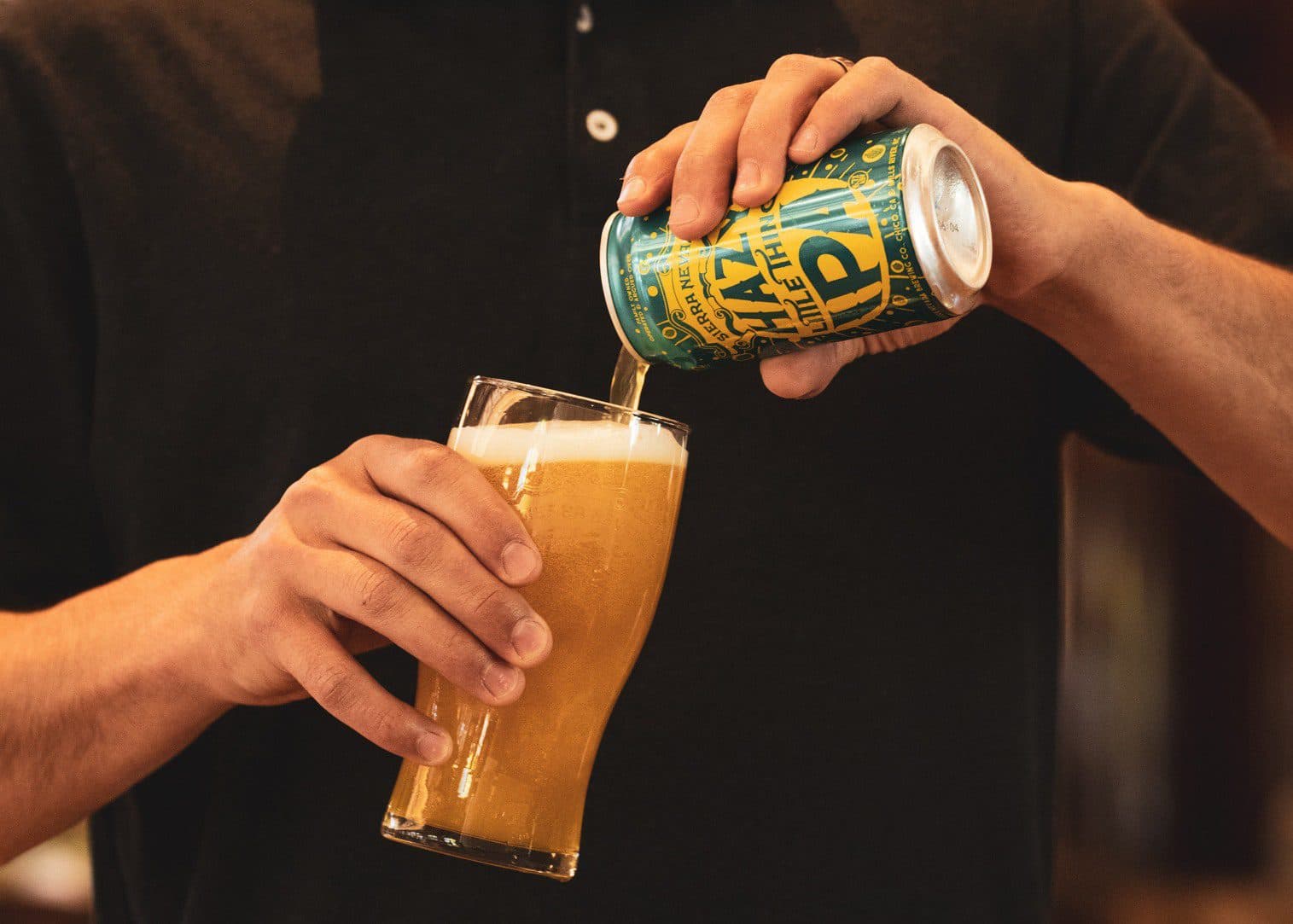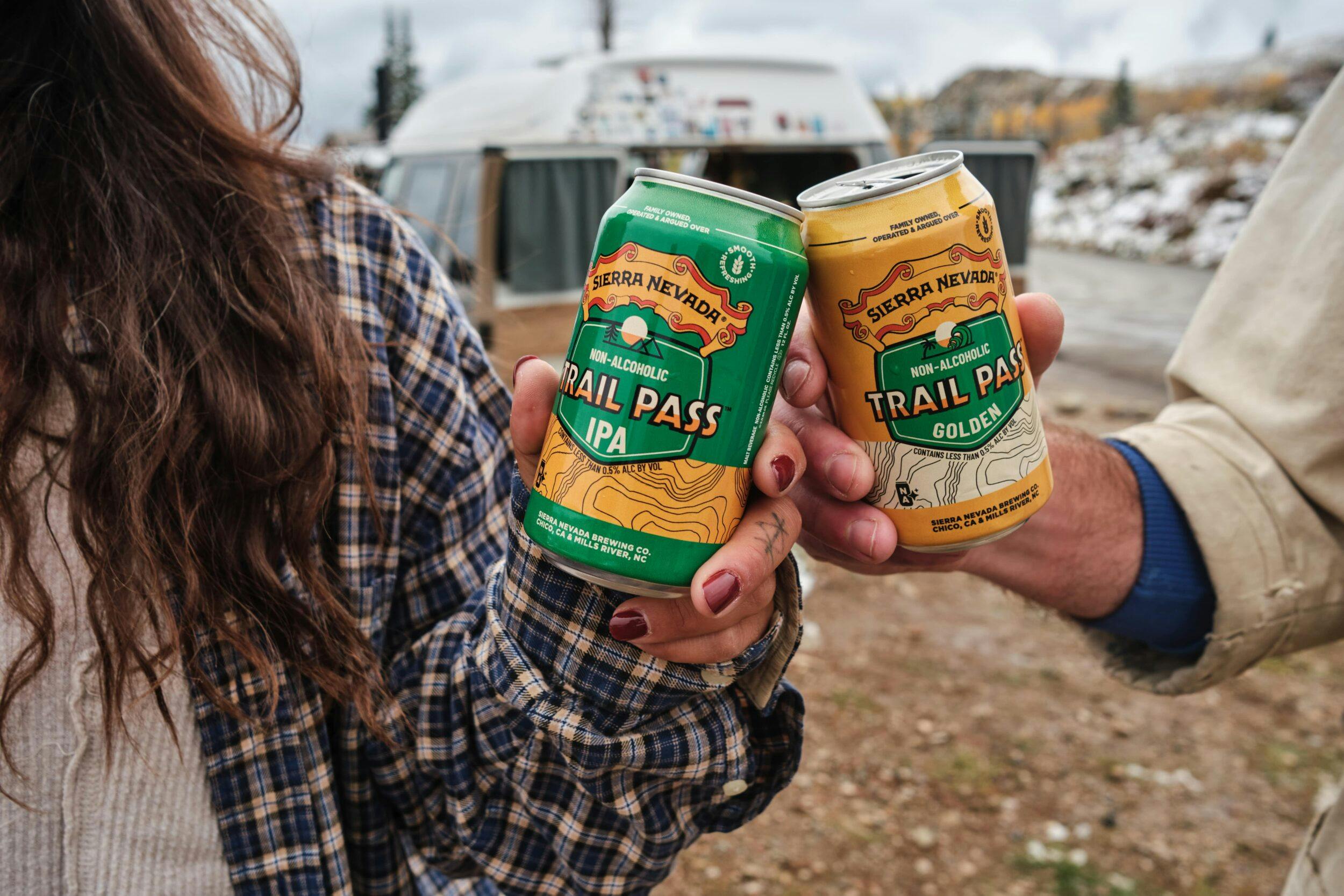If it can hold 3,500-pound batteries, then surely a few backyard chickens can roost in peace.
Jim Belles, our agriculture manager in Chico, needed a coop for the new flock of birds moving into our garden. He scoured the brewery for spare materials to repurpose.
What he found was ideal, albeit immense: a metal frame—a bench of sorts—where forklift batteries sat while recharging. Forklifts zip around the brewery at all times, so we use rechargeable batteries to reduce propane consumption.
The batteries just happen to be heavier than your average car.
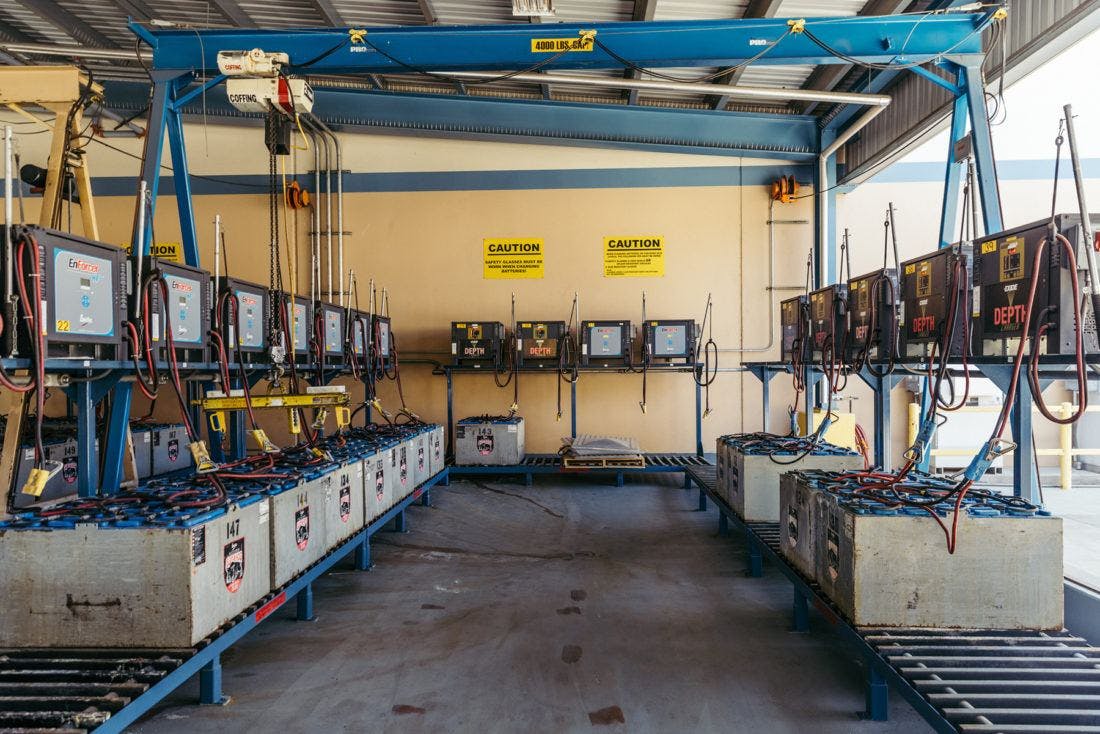
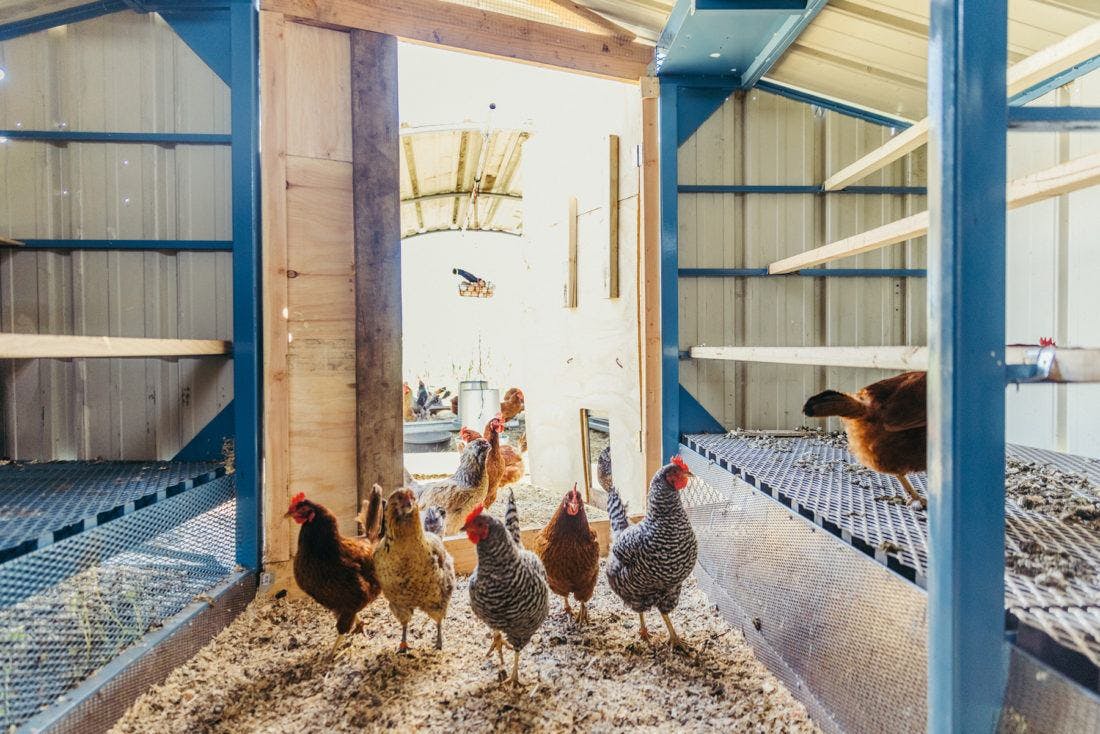
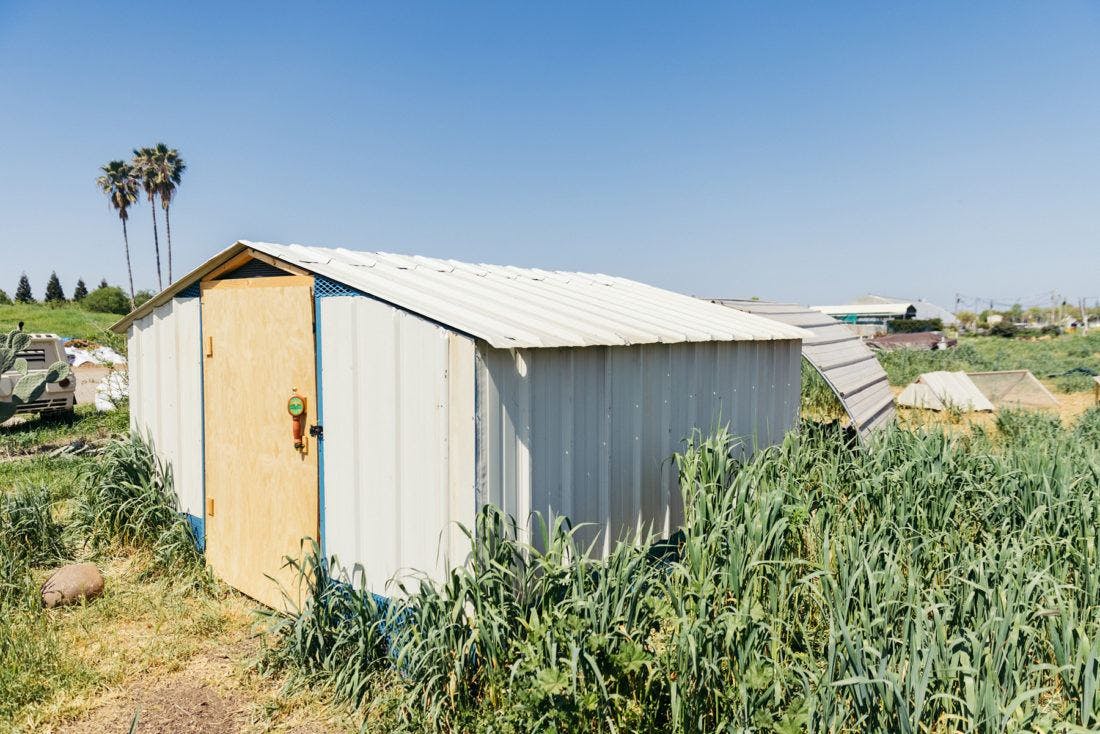
“So it’s overly built for containing chickens,” Jim chuckles, “but it was there, and it was about the right proportions.”
Jim and his agriculture teammate Amanda Costa planned for roughly 70 chickens—breeds including Rhode Island Reds, Barred Rocks, and Danish Brown Leghorns—and the frame’s footprint gave the necessary space for the flock. From there, it was a matter of customizing the design, completed by in-house craftsman Jon Walker—things like removable trays for easy cleaning, an extended “patio roof” for rainy days, and sliding doors for ventilation.
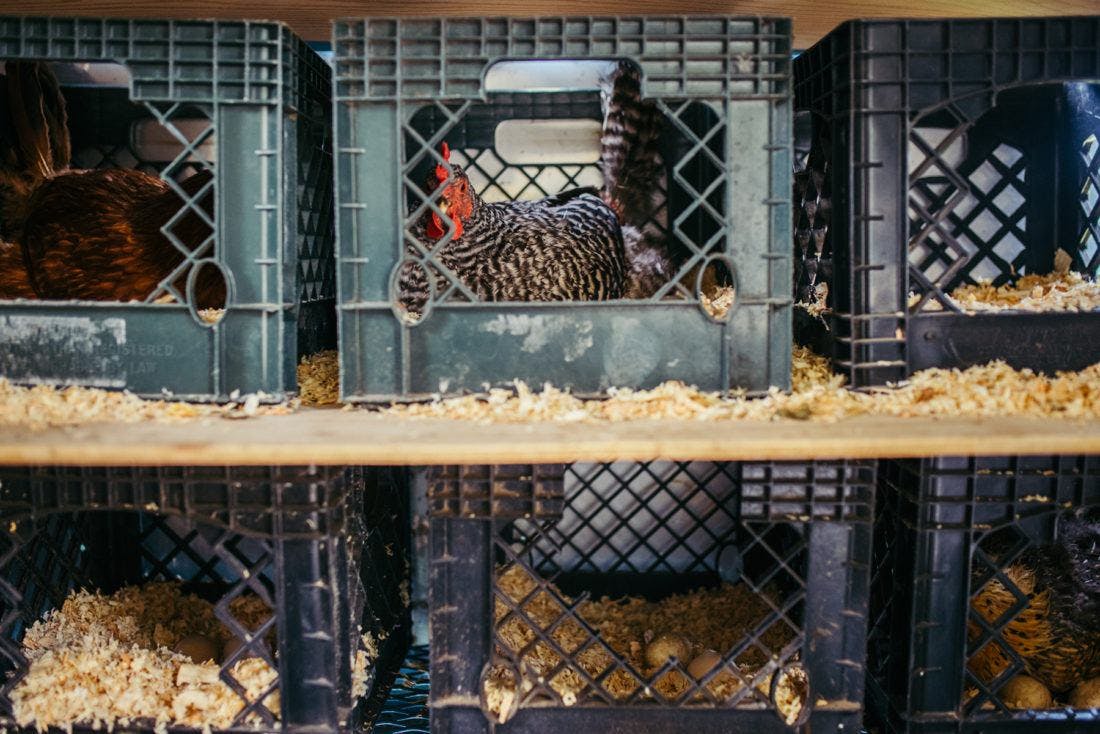
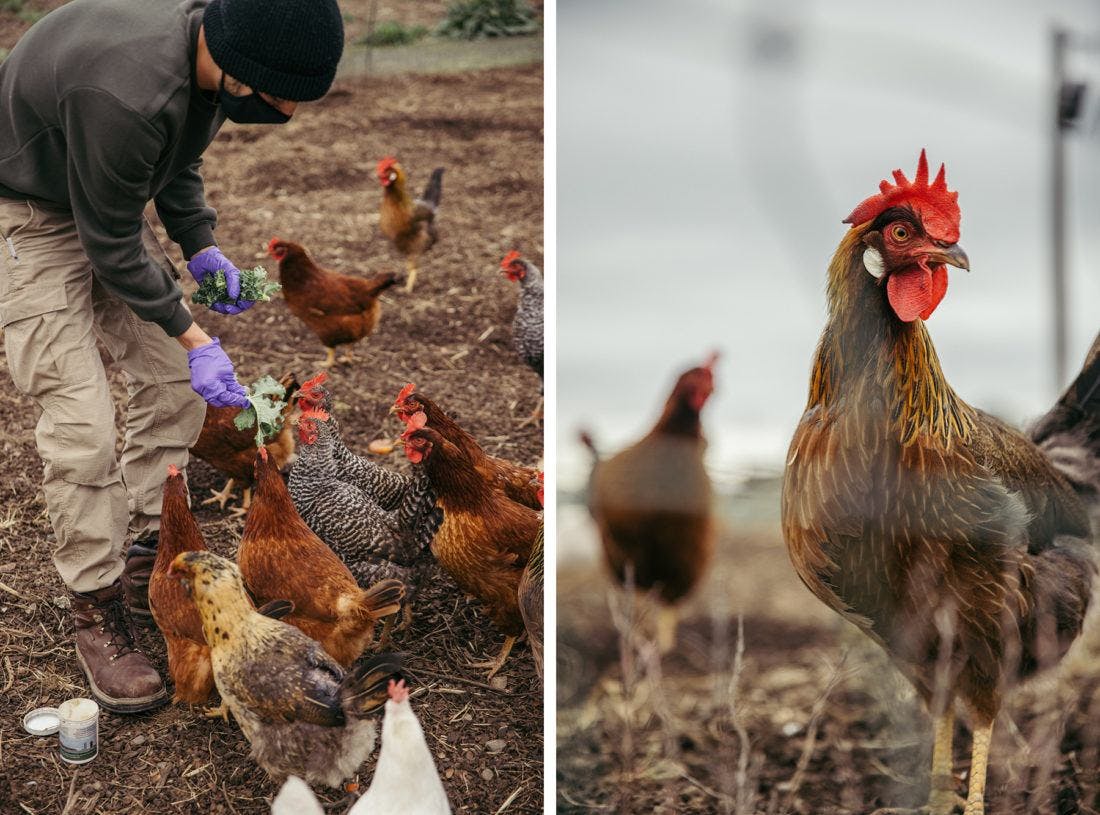
“So it’s overly built for containing chickens. But it was there, and it was about the right proportions.” – Jim Belles, Chico Agriculture Manager
Eggs are central to this whole effort. Jim explains that our Taprooms use hundreds of eggs each week; imagine everything from potato salad and creme brulee to egg wash for bread. Once mature, our flock should meet most of the demand.
And they’re organic to boot, which our Chico head chef Dan Grice says makes a difference.
“Flavor, texture, and nutrition are all benefits of farm-fresh eggs,” he explains. “The egg whites whip better for making mousse and meringue, and the yolks of [an organic] chicken tend to be brighter in color…and are generally lower in cholesterol.”
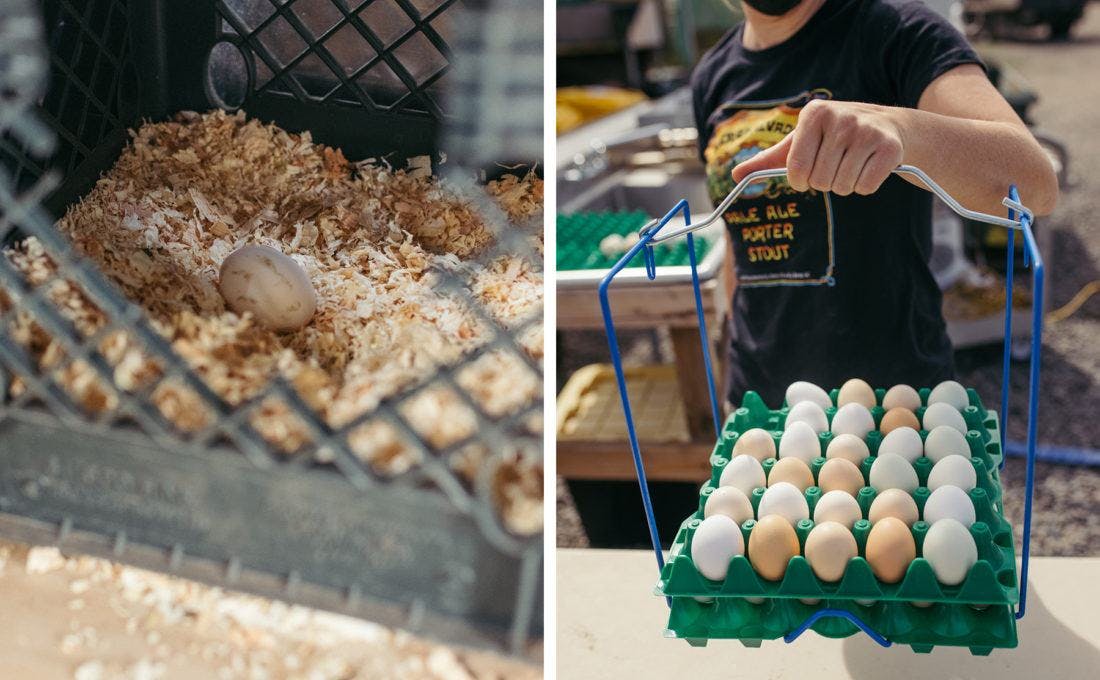
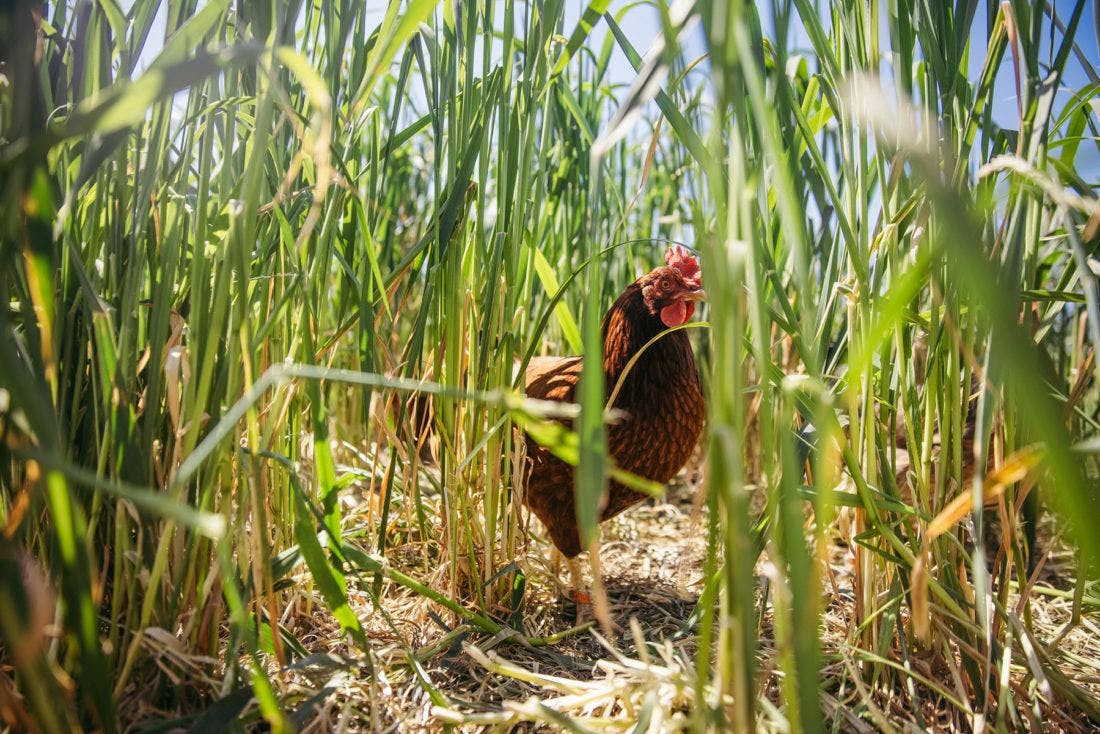
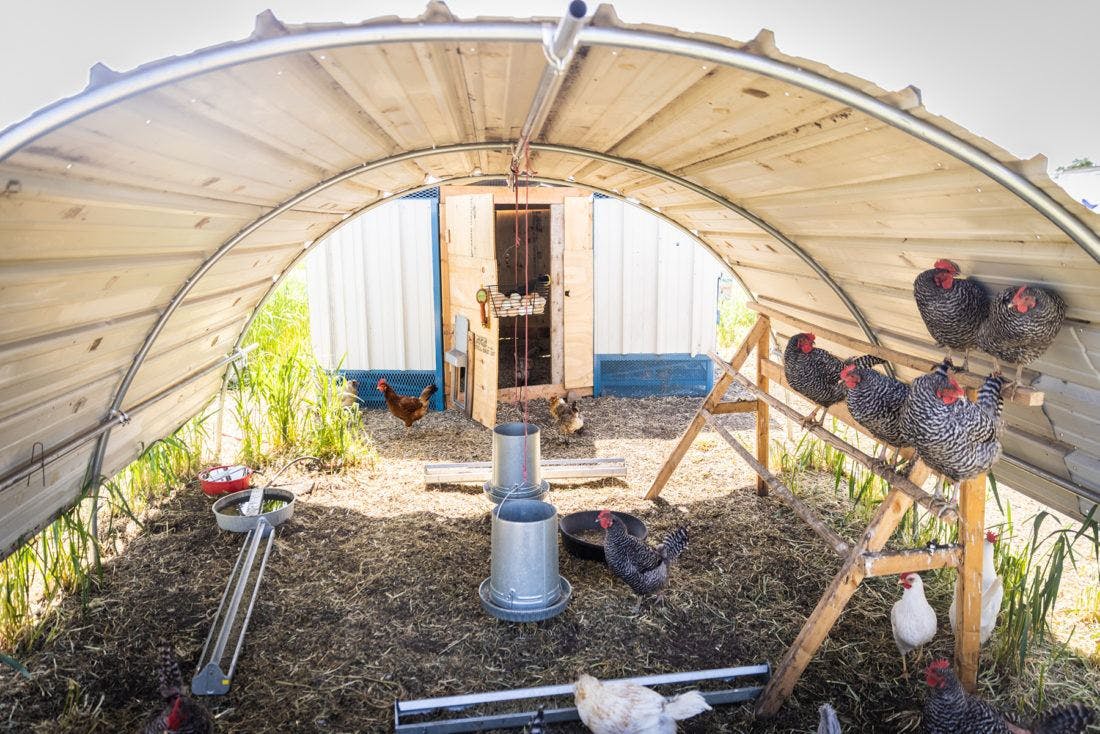
Dan also highlights what he calls “the respect factor” when it comes to how animals are nurtured.
“It pleases me to know that our eggs will be coming from chickens that are allowed to live in an outdoor pasture, moving freely, and scratching the soil,” he says.
That soil-scratching—digging for weed seeds, insects, and more—leads to healthier gardens, which we’ve experienced at our brewery in Mills River, North Carolina. While chickens are new in Chico, we introduced them in Mills River in 2018. There we have 3 acres of organic farmland along the French Broad River, and we graze our chickens all over, moving a fencing perimeter to guide them.
“I think it’s over 7,000 square feet,” says Jon Strom, our agriculture supervisor in Mills River, “and that’ll last them for like a week. Because they just tear up the ground…and then you can just move them right over to the fresh pasture next door, and they’re happy again and they have what they need.”
“It pleases me to know that our eggs will be coming from chickens that are allowed to live in an outdoor pasture, moving freely, and scratching the soil.” – Dan Grice, Chico Head Chef
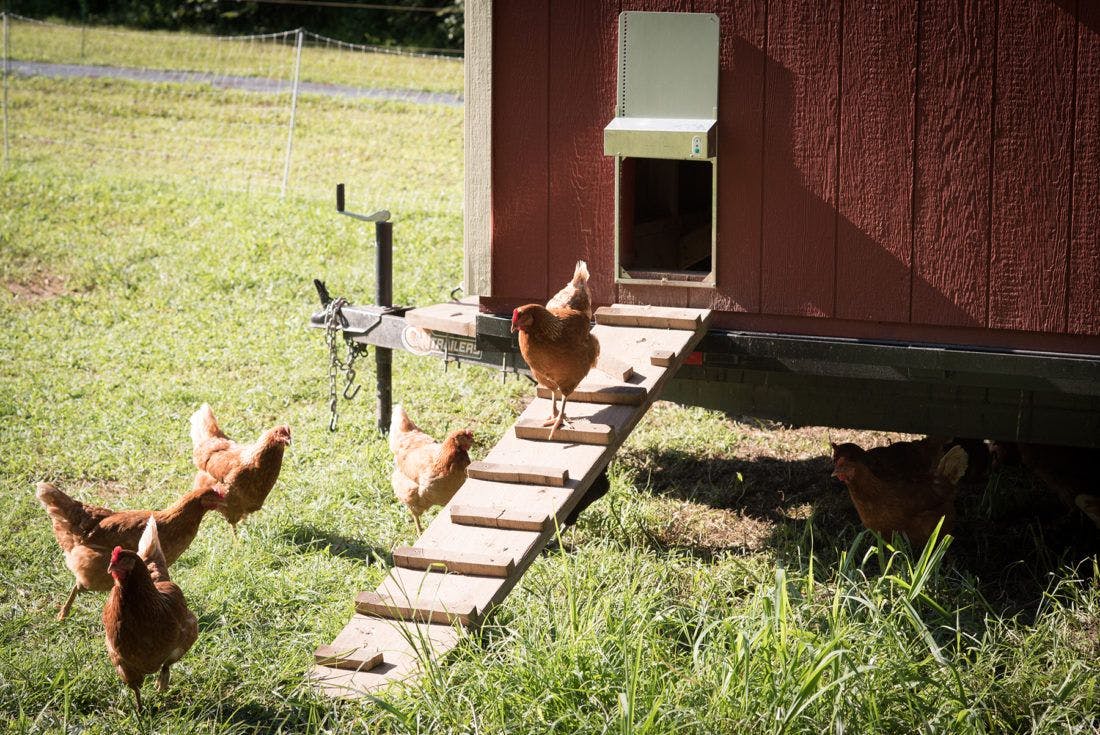
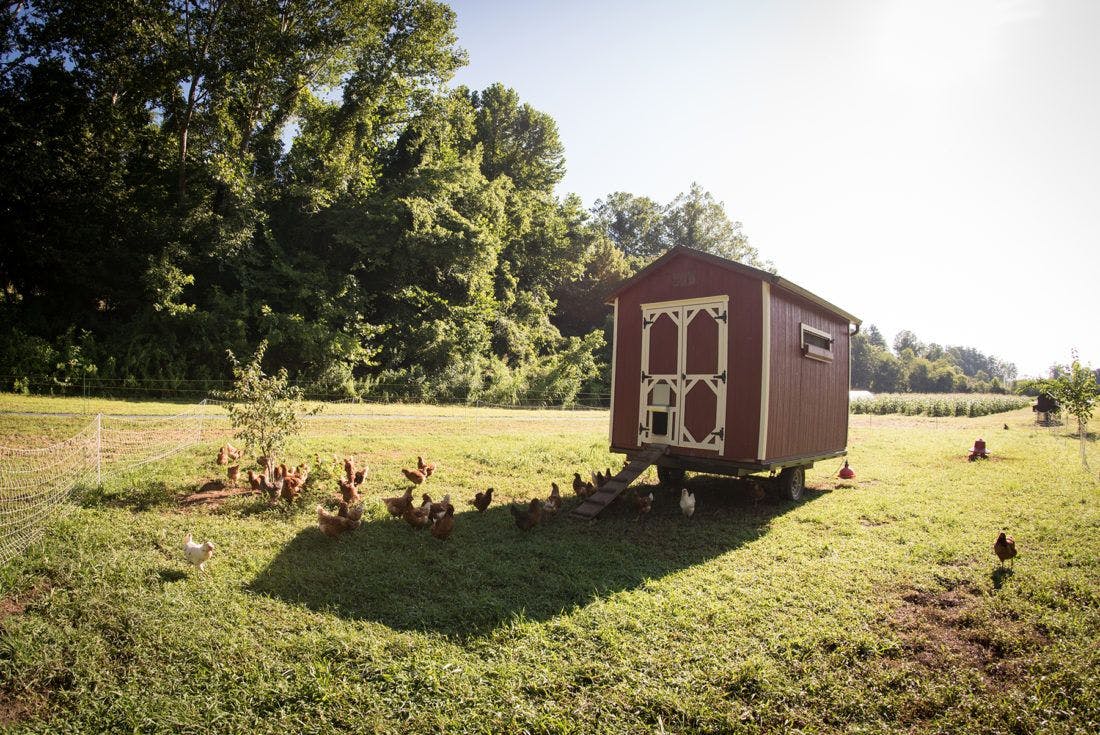
This foraging is mainly in winter, Jon explains, leaving ample time for planting and harvesting future crops. And after just one year, the chickens helped enhance crucial nutrients in the ground.
“In the soil tests for 2020,” Jon says, “our phosphorus and potassium significantly increased.”
And if chickens at a brewery seems curious, others have wondered the same.
“The guy that we got the hens from,” Jon recalls, “his first delivery here, he was like, ‘What in the hell does a brewery need with chickens and chicken food?’”
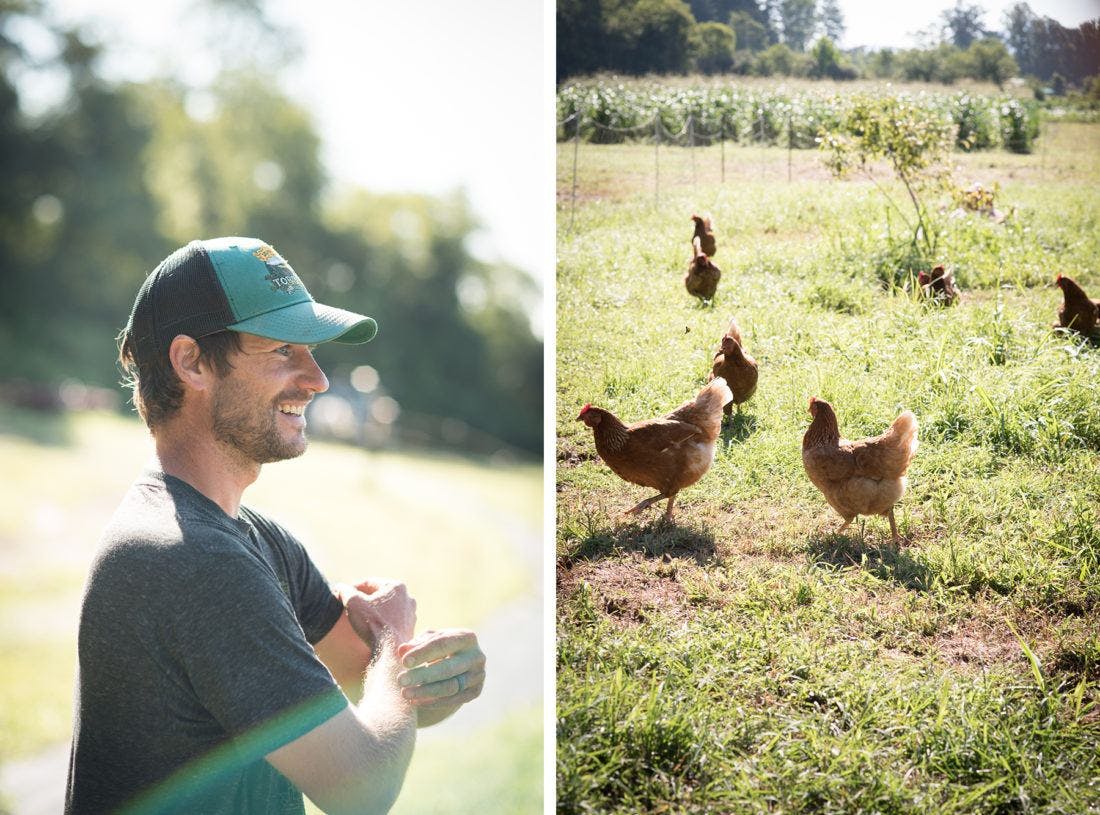
While our Estate agriculture started 15 years ago with just a few rows of hops, it’s become integral to our holistic approach to sustainability—from waste diversion and energy creation to rainwater harvesting and, yes, homegrown food.
“The more we dive into organic agriculture and want something that’s going to be self-sustaining,” says Jim Belles in Chico, “one of the best ways to push that forward is to have a multifaceted system. The more components to your system…they will play off of one another.”
Chickens weave into that synergy, and at least in Mills River, they’ve already been joined by other livestock: nine sheep and two donkeys. Quite the little landscaping crew.
